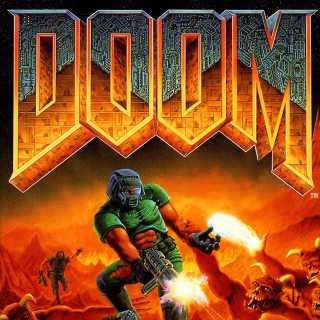Games are finally IT!
It’s finally becoming clear. After years of thinking that computers were mainly useful for business, and games were only a sideline, the PC industry is coming round with astonishing speed.
Some Facts
New home PCs are now generally more powerful than office PCs. Page 65 of the 6 May 1995 Economist reports that in fourth quarter 1994, 17.6% of new home computers had Pentiums, as opposed to only 15.6% of new office computers. Does this surprise you? Get ready for more surprises.
Microsoft has finally heard the pleas of gamers, and Windows 95 already takes records for “most game developers supporting a new operating system”. The main excitement is about hardware independence without losing speed, and a real 3D rendering API that is fully general and hardware acceleratable. Networking support also takes a big step forward with Win95. Doom set the precedent; these days, almost no game is considered complete without networking support. Playing against others is more fun.
Home video games are a multibillion-dollar-per-year global industry, and there is a much larger potential market implicit in new Win95 users. Moreover, most 3D PC games are easily convertible to Sony Playstation format, which gets you two platforms for the price of one development effort. “PC and Playstation” is a very widely heard phrase around the industry these days.
There are many many well-known game companies and designers developing for Windows 95. Some examples of the best: Bullfrog, Origin, Activision, and Mindscape (which has no home page yet). Most are focusing on 3D networked gaming.
Other ventures into power-hungry network worlds exist. For more on that, see my guide to cyberspaces.
Some Predictions
These trends will accelerate. Entertainment will be driving the technology of personal computers for at least the next ten years.
This is the best thing to ever happen to the user interface designers who’ve been bemoaning the last two decades’ lack of innovation… there are going to be many more people thinking about how to make computers fun, and many new possibilities in real-time 3D. It is quite possible that the 2D “desktop” interfaces we work with today will be a much smaller part of computer use in the future.
No new technology eradicates old technology completely. Desktop GUI interfaces will still be viable in a world which places great reliance on forms, columns, and words. But as 3D environments become more available, nay ubiquitous, and as those worlds become more densely (and intuitively) populated, people will spend more of their PC leisure time and socializing time in such worlds. Chat BBSes and old-line 2D games will lose market share.
Of course, current business markets will comtinue to thrive in the near term. The bandwidth of most Net users, and the typical latency of the Internet, will make the World Wide Web the medium of choice for people doing online experiments over the next few years. Thereafter, easy modeling tools (like none we have today) and relatively established protocols (defined by many companies making games willy-nilly) will explode the number of home spaces. VRML is only the beginning of networked 3D.
Alternately, one might wonder whether games aren’t just a waste of time.
Disclaimer
I believe all this strongly enough to have left Autodesk for a job at Protozoa doing, you guessed it, 3D networked game programming. So far it is a blast, which is easy to say since I don’t start work until September 5th. Note: Protozoa’s site may not be up yet (as of 4 August 1995).








